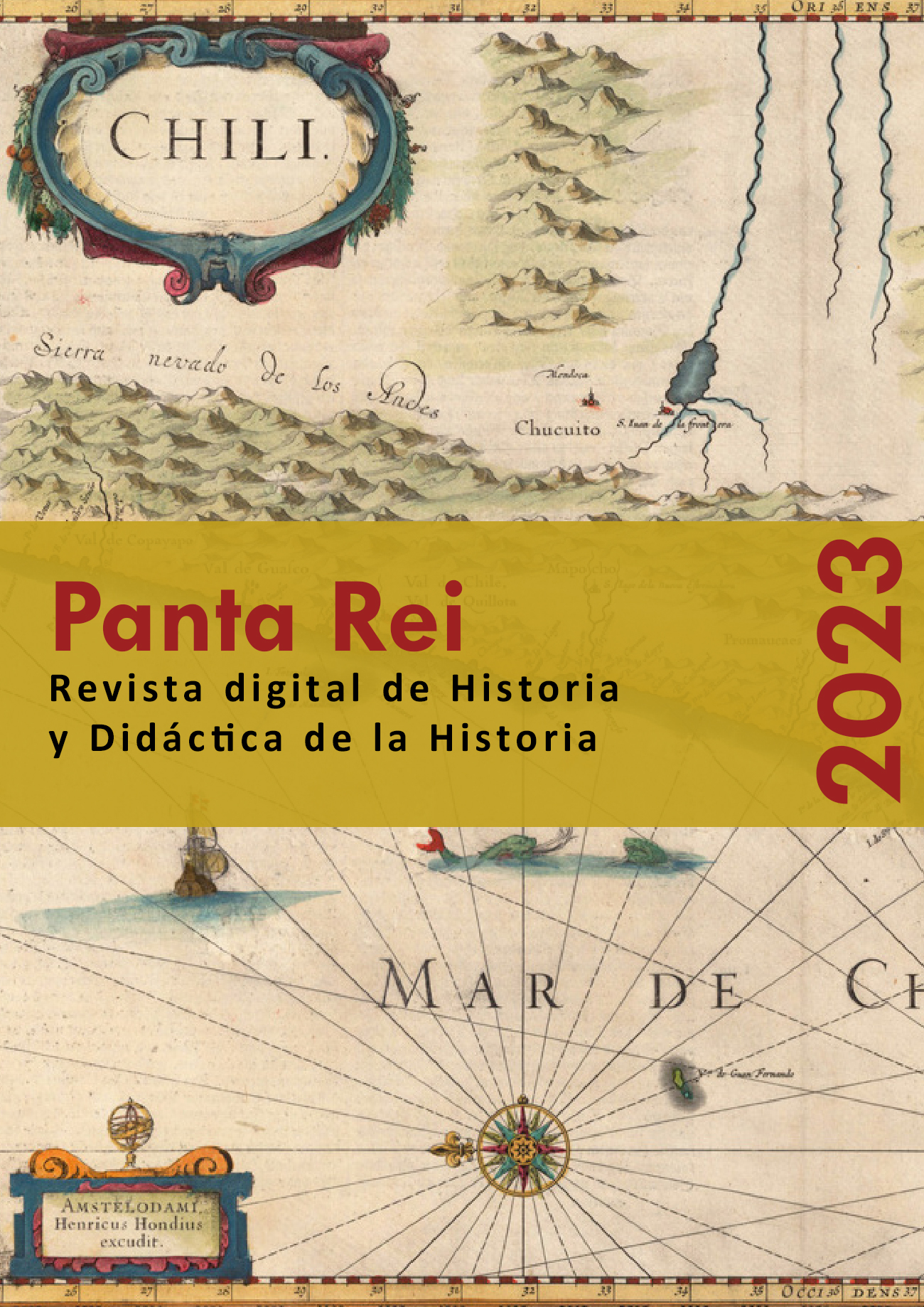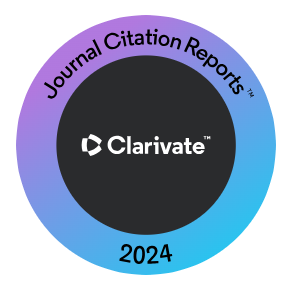Más allá de Yamato: en la perifería del poder. Consideraciones para el estudio de la antigüedad japonesa
Agencias de apoyo
- Este trabajo ha sido realizado en el marco de los proyectos no financiados de investigación en Asia de la Universidad Isabel I, del GIR Humanismo Eurasia (HUME, Universidad de Salamanca), y del Grupo de trabajo en estudios de Asia (GTEA, Universidad Complutense de Madrid).
Resumen
En este trabajo se realizará un análisis de la evolución histórica de las poblaciones tanto de la isla de Hokkaidō como del ámbito okinawense. Para ello, se acudirá a distintas fuentes de información, como restos arqueológicos, fuentes textuales y estudios etnoantropológicos, gracias a los cuales se puede entender un poco mejor la relación entre las poblaciones actuales okinawense y ainu y sus ancestros pre y protohistóricos, así como la relación de éstos últimos con el ámbito cultural de Yamato, teniendo en cuenta las problemáticas concretas de ambos ámbitos. La posición periférica de ambos territorios con respecto al protoestado de Yamato será clave para comprender el devenir histórico de los dos, y será un factor importante que ha afectado a lo largo de la historia a la percepción de las culturas okinawense y ainu, así como a las diversas interpretaciones historiográficas de ambas.
Descargas
-
Resumen852
-
PDF464
-
EPUB156
Citas
Abad, R. (2014): Claves conceptuales para comprender la arqueología japonesa a principios del s XXI. Asiadémica, 3, 14-24.
Aikens, C. M. y Higuchi, T. (1982): Prehistory of Japan. Academic Press London.
Asato, S. (2009): Archaeology of the Ryukyu Islands: Major Themes, en R. Pearson, (ed.), Okinawa: The Rise of an Island Kingdom. Archaeological and cultural perspectives (pp. 1-4). Archaeopress British Archaeological Reports (International Series, 1898).
Barnes, G. L. y Okita, M. (1999): Japanese Archaeology in the 1990s. Journal of Archaeological Research, 7(4), 349-395.
Chamberlain, B. H. (1888): Aino Folk-Lore. The folk-lore journal, 6(1), 1-51.
Crawford, G.W. y Takamiya, H. (1990): The origins and implications of late prehistoric plant husbandry in northern Japan. Antiquity, 64, 889–911.
Crawford, G. W. (1992): The Transitions to Agriculture in Japan, en A. Birgitte y T. Douglas (eds.), Transitions to Agriculture in Prehistory (pp 117-132). Prehistory Press (Monographs in World Archaeology, 4).
Crawford, G. W. (2008): The Jomon in early agriculture discourse: issues arising from Matsui, Kanehara y Pearson. World Archaeology, 40(4), 445-465. DOI: 10.1080/00438240802451181
Crawford, G. W. (2011): Advances in understanding Early Agriculture in Japan. Current Anthropology, 52, supl. 4, 331-345. DOI:10.1086/ 658369
D'Andrea, A. C. (1992): Paleoethnobotany of Later Jomon and Early Yayoi Cultures in Northeastern Aomori and Southern Hokkaido. Tesis doctoral. Universidad de Toronto.
D'Andrea, A. C. (1995b): Later Jomon subsistence in Northeastern Japan: new evidence from palaeoethnobotanical studies. Asian Perspectives, 34(2), 195- 227.
D'Andrea, A. C. et al. (1995): Late Jomon cultigens in northeastern Japan. Antiquity, 69, 146-152.
Fujimoto, T. (1981): The Satsumon culture. Pre-Ainu culture of Hokkaido. 地 学 雑 誌 (Journal of Geography), 90(2), 122-136.
Fukasawa, Y. (1998): Ainu Archaeology as Ethnohistory: iron technology among the Saru Ainu of Hokkaido, Japan, in the 17th century. Archaeopress British Archaeological Reports (International Series, 744).
Howell, D.L. (2014): Is Ainu History Japanese History?, en M. J. Hudson, A. Lewallen y M. K. Watson (eds.), Beyond Ainu Studies. Changing academic and public perspectives (pp. 101-116). University of Hawai’i Press.
Hudson, M.J. (1990): From Toro to Yoshinogari. Changing perspectives on Yayoi Period Archaeology, en G. L. Barnes (ed.), Hoabinhian, jomon, ainu, korean states (pp. 63-111). Oxbow.
Hudson, M.J. (1992): Rice, Bronze and Chieftains. An Archaeology of Yayoi Ritual. Japanese Journal of Religious Studies, 19(2-3), 139-189.
Hudson, M.J. (1999): Ruins of Identity. Ethnogenesis in the Japanese Islands. University of Hawai’i Press.
Hudson, M.J. (2004): The perverse realities of change: world system incorporation and the Okhotsk culture of Hokkaido. Journal of Anthropological Archaeology, 23, 290-308. DOI: 10.1016/j.jaa.2004.05.002
Hudson, M.J. (2014): Ainu and Hunter-Gatherer Studies, en en M. J. Hudson, A. Lewallen y M. K. Watson (eds.), Beyond Ainu Studies. Changing academic and public perspectives (pp. 117-135). University of Hawai’i Press.
Imamura, K. (1996): Prehistoric Japan: new perspectives on insular Asia. University of Hawai’i Press.
Ishige, N. (2001): History and culture of Japanese food. Kegan Paul.
Kidder, J. E. (1966): Japan before Buddhism. Thames and Hudson.
Kidder, J. E. (1977): Ancient Japan. Elsevier-Phaidon.
Kidder, J. E. (1997): The earliest societies in Japan, en D. M. Brown (ed.), The New York History of Japan, Vol. I (pp. 48-107). Cambridge University Press.
Kinoshita, N. (2003): Shell trade and exchange in the Prehistory of the Ryukyu Archipelago. Indo-Pacific Prehistory Association Bulletin, 23(1), 67-72. DOI: 10.7152/bippa.v23i0.11853
Kinoshita, N. (2009): Shell exchange in the Ryukyu Islands and in East Asia, en R. Pearson, (ed.), Okinawa: The Rise of an Island Kingdom. Archaeological and cultural perspectives (pp. 13-39). Archaeopress British Archaeological Reports (International Series, 1898).
Kitagawa, J. M. (1961): Ainu bear Festival (Iyomante). History of Religions, 1(1), 95-151.
Lie, J. (2001): Multi-ethnic Japan. Harvard University Press.
Low, M. (2012): Physical Anthropology in Japan: the Ainu and the search for the origins of the Japanese. Current Anthropology, 53(5), 57-68.
Muñoz, I.M. (2017): Relaciones internacionales en la Esfera de Interacción del Mar Amarillo en la Protohistoria japonesa. Antesteria, 6, 175-195.
Nakazono, S. (2011): The role of long-distance interaction in the Yayoi period, en N. Matsumoto, H. Bessho y M. Tomii (eds.), Coexistence and Cultural transmission in East Asia (pp. 49-68). Routledge.
Ono, Y. (1999): Ainu homelands: Natural History from Ice Age to Modern Times, en W. W. Fitzhugh y C. O. Dubrevil (eds.), Ainu. Spirit of a Northern People (pp. 32-38). University of Washington Press.
Pearson, R.J. (1990): Chiefly exchange between Kyushu and Okinawa, Japan, in the Yayoi period. Antiquity 64, 912-922.
Pearson, R.J. (1992): Ancient Japan, New York.
Pearson, R.J. (2013): Ancient Ryukyu. An Archaeological Study of Island Communities. University of Hawai’i Press.
Sahara, M. (1992): Rice cultivation and the Japanese. Acta Asiatica, 63, 40-63.
Siddle, R. (1996): Race, Resistance and the Ainu of Japan. Routledge.
Sjöberg, K. (1993): The Return of the Ainu. Cultural mobilization and the practice of ethnicity in Japan. Harwood Academic Publishers.
Smale, J. (2014): End of Okhotsk? A Peer Polity Interaction approach to the interaction, exchange and decline of a Northeast-Asian maritime culture on Hokkaido, Japan. Tesis de máster. Universidad de Leiden.
Takahashi, R. et al. (2012): Morphological and molecular phylogenetic characteristics of dwarf Sus specimens from the Noguni shell middens in the Ryukyu Islands. Anthropological Science, 120(1), 39-50.
Takamiya, H. (1996): Initial colonization, and subsistence adaptation processes in the late prehistory of the island of Okinawa. Indo-Pacific Prehistory Association Bulletin, 15, 143-150.
Takamiya, H. (2004): Population dynamics in the Prehistory of Okinawa, en S. M. Fitzpatrick, (ed.), Voyages of discovery: the archaeology of islands (pp. 111-128). Praeger.
Takamiya, H. (2008): The transition from foragers to farmers on the island of Okinawa. Bulletin of the Indo-Pacific Prehistory Association, 21, 60-67. DOI: 10.7152/bippa.v21i0.11763
Takamiya, H. (2009): Okinawa's Earliest Inhabitants and Life on the Coral Islands”, en R. Pearson (ed.), Okinawa: The Rise of an Island Kingdom. Archaeological and cultural perspectives (pp. 5-12). Archaeopress British Archaeological Reports (International Series, 1898).
Turnbull, S. (2007): Pirate of the Far East. 811-1639. Osprey Publishing.
Walker, B. L. (2006): The Conquest of Ainu Lands. Ecology and Culture in Japanese Expansion, 1590-1800. University of California Press.
Watanabe, H. (1986): Community Habitation and Food Gathering in Prehistoric Japan: an Ethnographic interpretation of the Archaeological evidence, en R. J. Pearson, G. L. Barnes y K. Hutterer (eds.), Windows on the Japanese Past: Studies in Archaeology and Prehistory (pp. 229-254). University of Michigan Press.
Yamaura, K. y Ushiro, H. (1999): Prehistoric Hokkaido and Ainu origins, en W. Fitzhugh y C. Dubrevil (eds.), Ainu. Spirit of a Northern People (33-46). University of California Press.
Derechos de autor 2023 Irene Minerva Muñoz Fernández

Esta obra está bajo una licencia internacional Creative Commons Atribución-CompartirIgual 4.0.
Todos los contenidos publicados en nuestra revista están sujetos a una licencia Atribución 4.0 Internacional (CC BY-SA 4.0) de Creative Commons. Usted es libre de compartir (copiar y redistribuir el material en cualquier medio o formato) y adaptar (remezclar, transformar y crear a partir del material para cualquier finalidad, incluso comercial), bajo los siguientes términos:
Reconocimiento: Debe reconocer adecuadamente la autoría, proporcionar un enlace a la licencia e indicar si se han realizado cambios. Puede hacerlo de cualquier manera razonable, pero no de una manera que sugiera que tiene el apoyo del licenciador o lo recibe por el uso que hace.
CompartirIgual: Si remezcla, transforma o crea a partir del material, deberá difundir sus contribuciones bajo la misma licencia que el original.
El texto completo de la licencia se puede consultar en: Licencia Creative Commons













